America's biggest past megaprojects
The megaprojects that transformed America
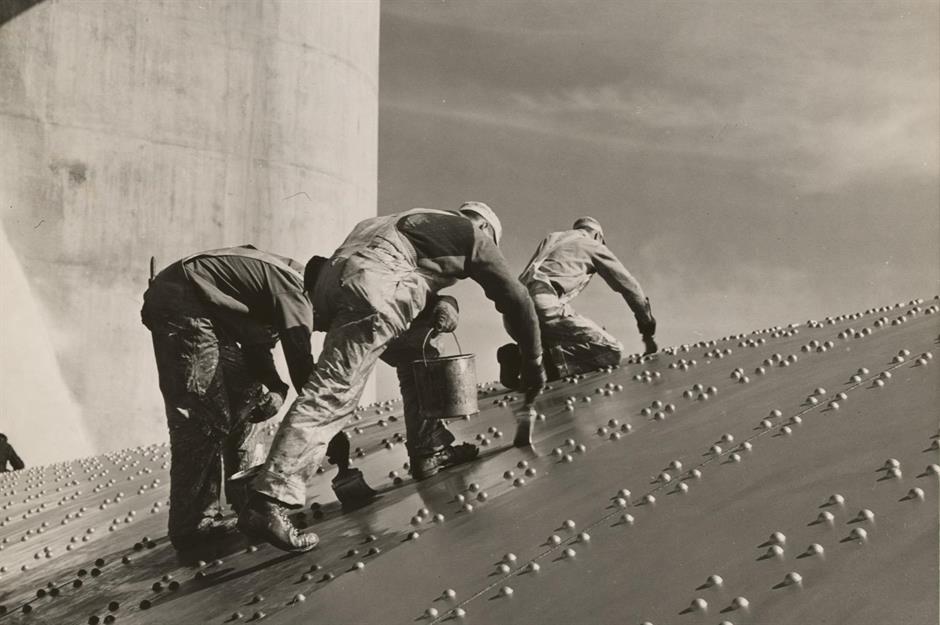
America is known as the land of plenty – and when it comes to construction, it certainly lives up to its nickname. From record-breaking bridges to colossal canals, the US is home to some of the world's biggest megaprojects. Read on to discover the stories behind iconic American landmarks that have changed the face of the country forever.
Delaware Aqueduct
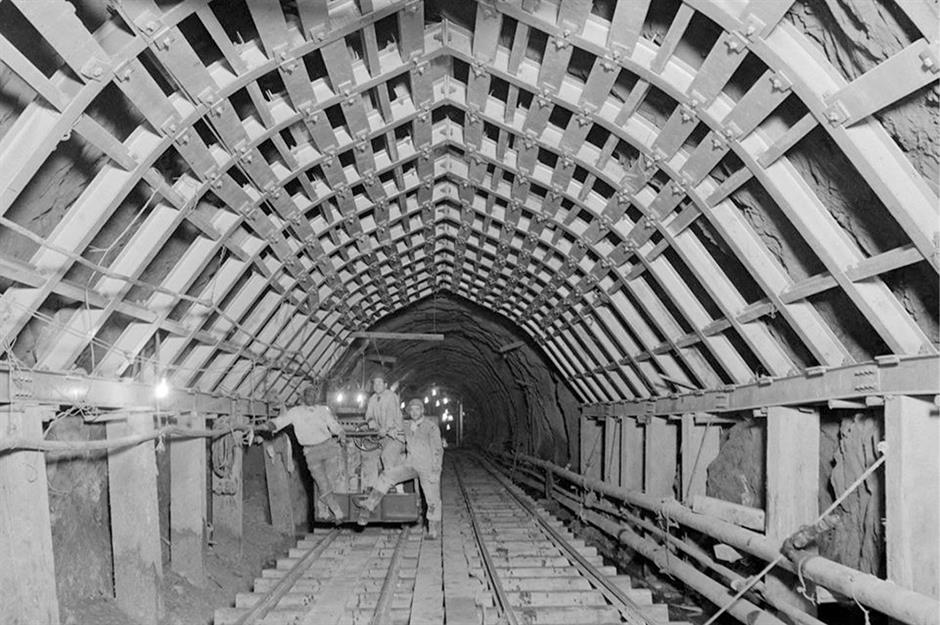
The merger of Brooklyn, Queens and Staten Island with Manhattan and the Bronx in 1898 put pressure on water demand, according to New York City’s Department of Environmental Protection (DEP). To connect to new reservoirs in the Catskill Mountains, the city constructed the 85-mile Delaware Aqueduct, the world’s longest tunnel. Built during the 1930s-1940s, at depths of almost 1,500ft, the aqueduct went into operation in 1944 in “emergency service” to support World War II efforts.
Delaware Aqueduct
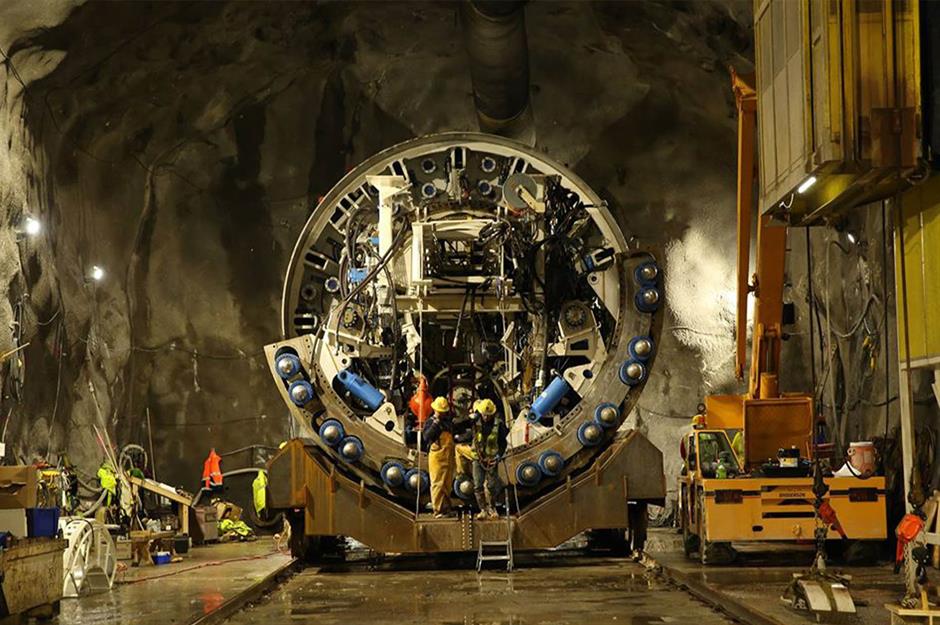
Roughly half of New York, around 9 million people, rely on the world’s longest tunnel for their drinking water. Since the late 1990s, the city has monitored two leaks in the aqueduct, estimating losses of about 35 million gallons per day. Over the last 10 years the DEP has been building a 2.5-mile bypass tunnel at the cost of $1 billion, which, now finished, allows it to take the leaky portion of the old aqueduct out of service for repairs. This work is planned for October 2023.
Erie Canal
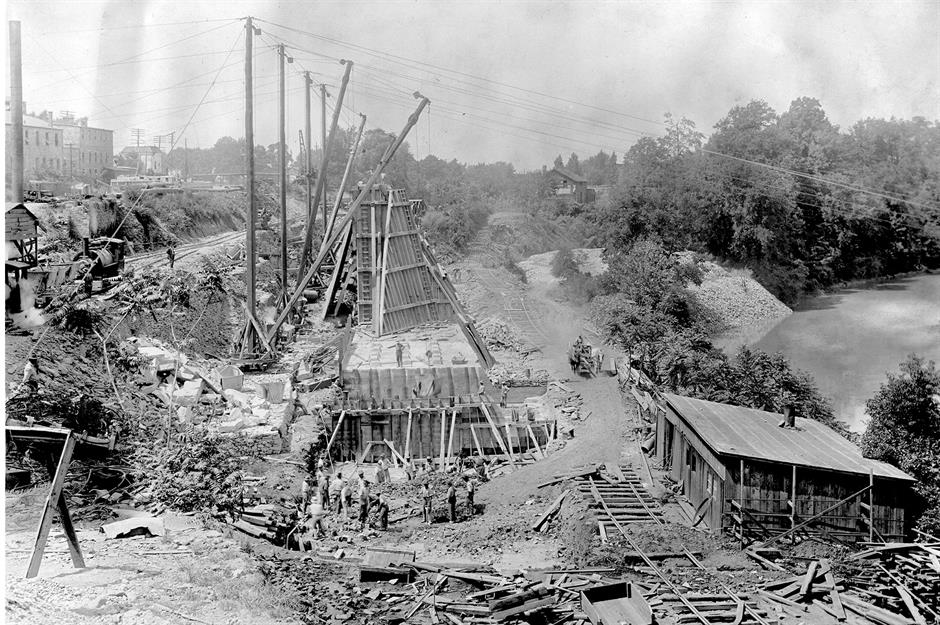
In the early 18th century, any goods that needed to be shipped had to be transported by pack animals. Waterways provided a much more cost-effective way to travel and many envisioned a canal to connect the Atlantic Ocean to the Great Lakes. This finally came to fruition in 1817 when construction started on the 400-mile Erie Canal, enabling the transport of goods to and from Buffalo on Lake Erie to the Hudson River at Albany.
To build the canal – which is about 40ft wide and 4ft deep, with 34 locks – workers had to go through forests, fields, rocky outcrops and swamps. The project's managers and engineers had very little experience in civil engineering, and many of the thousands of newly-arrived immigrants working on the project devised ingenious mechanized solutions to increase efficiency.
Erie Canal

Construction was completed in 1825 and the canal had an immediate impact. By reducing the price of shipping, trade between the Midwest and the Northeast grew while prices for goods such as food dropped. Many believe the canal is a major reason for New York’s success as an international trade partner. But today’s canal is very different from the original, with some sections destroyed during expansion efforts, and its use now mainly limited to recreation. The project cost $7 million to build at the time, which is the equivalent of about $160 million today.
Transcontinental Railroad
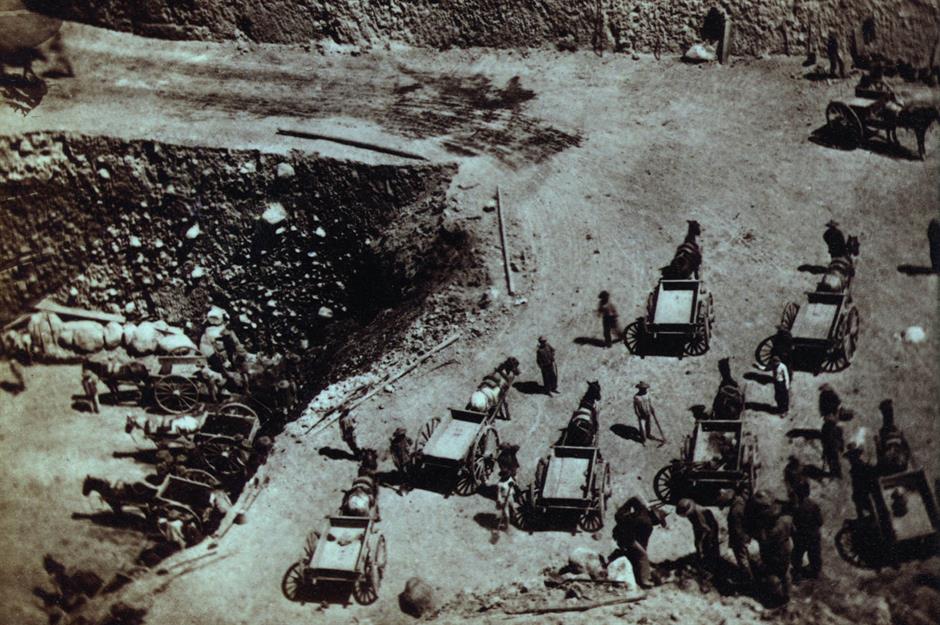
By the mid 18th-century, extensive railways ran along the East coast and throughout the South and Midwest. Congress began discussing the possibility of a railroad connecting to the West coast. Surveys from 1853 to 1855 helped determine the feasibility of five routes, but political divides between the north and the south led to a stalemate. When the southern states started seceding in 1861, political deadlock over the route disappeared and president Lincoln signed the Pacific Railroad Act of 1862.
In addition to greenlighting the project along a northern route, it effectively established a competition between rail companies. The Union Pacific Railroad would start construction from the Iowa border, and the Central Pacific Railroad would start from Sacramento, California, breaking ground in 1863 and hiring Chinese immigrants to do the labor. These companies would receive $48,000 in government bonds for every mile of track built, further encouraging the rivalry.
Transcontinental Railroad
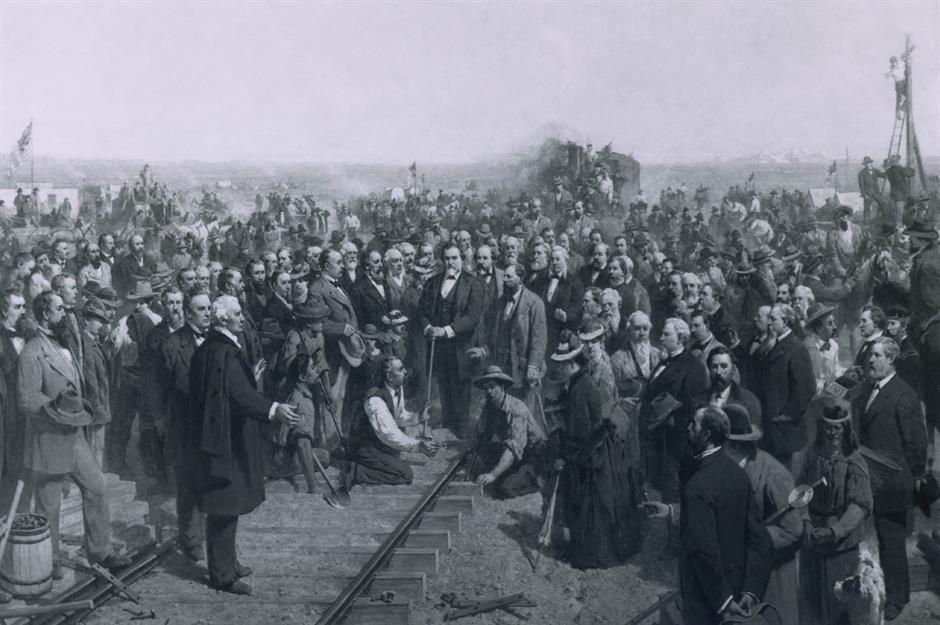
The Union Pacific Railroad Company didn’t start work until 1865 due to the Civil War, and when it did get started it employed many former soldiers discharged from both armies, as well as recent Irish immigrants. In 1869 the two companies met at Promontory Summit, Utah. The nearly 2,000-mile feat had finished, and the journey time from New York to San Francisco dropped from months to days. Today there are still sections of the railroad in use while others have been abandoned. In total, the project cost a $60 million at the time, the equivalent of $1.3 billion today.
Brooklyn Bridge

Engineers proposed a number of bridge designs to connect Brooklyn and New York but none of them worked due to the height requirements to accommodate river traffic. In 1852 an engineer called John Augustus Roebling proposed bridge’s suspension concept using steel wire, a world first. He had built shorter suspension bridges previously, but this would be much longer.
Construction started in 1869. Although no official figures are available, there are many stories of workers meeting their death while building the bridge, including Roebling himself who died after his foot was crushed during final measurements, leading to amputation and tetanus. His son Washington then took over the project. About 600 laborers worked on the project, coping with a fire, decompression sickness (the bends) and working at great heights, among other treacherous challenges. Washington himself became an invalid after a severe case of the bends and his wife, Emily, took on an active role to deliver the project.
Brooklyn Bridge
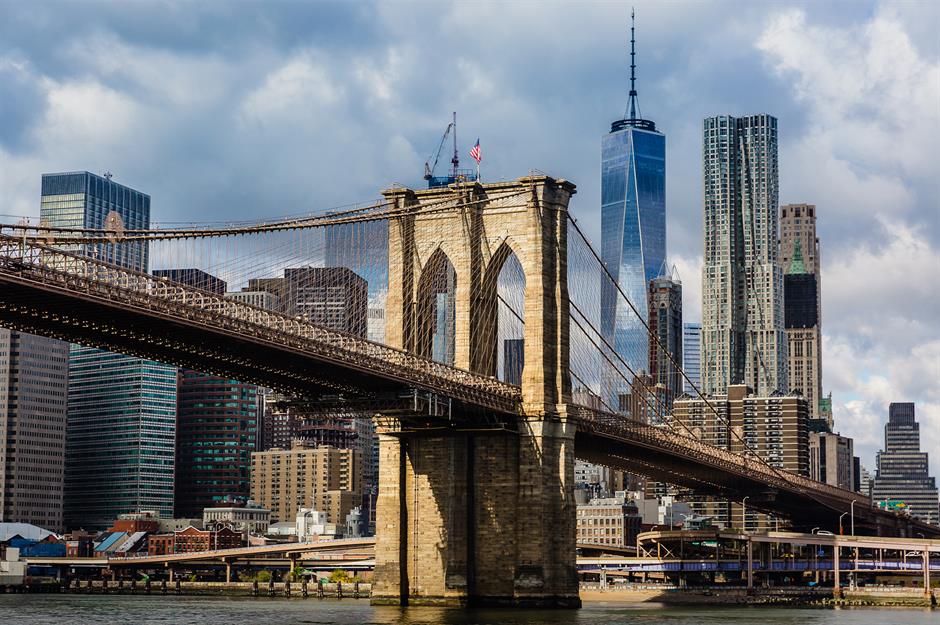
They Roeblings dealt with budget overruns, delays and opposition from the shipping industry, which was convinced the bridge would be too low. Nevertheless, the 6,000ft-long bridge opened in 1883 to great public celebration. Brooklyn paid around two-thirds of the total cost, which worked out to $15.5 million and would be worth $450 million today. While it isn’t the city's oldest bridge, the 140-year-old bridge is the oldest that's still open to traffic. The New York City Department of Transportation is currently rehabilitating various components of the bridge under a $240 million contract from 2019.
Grand Central Terminal
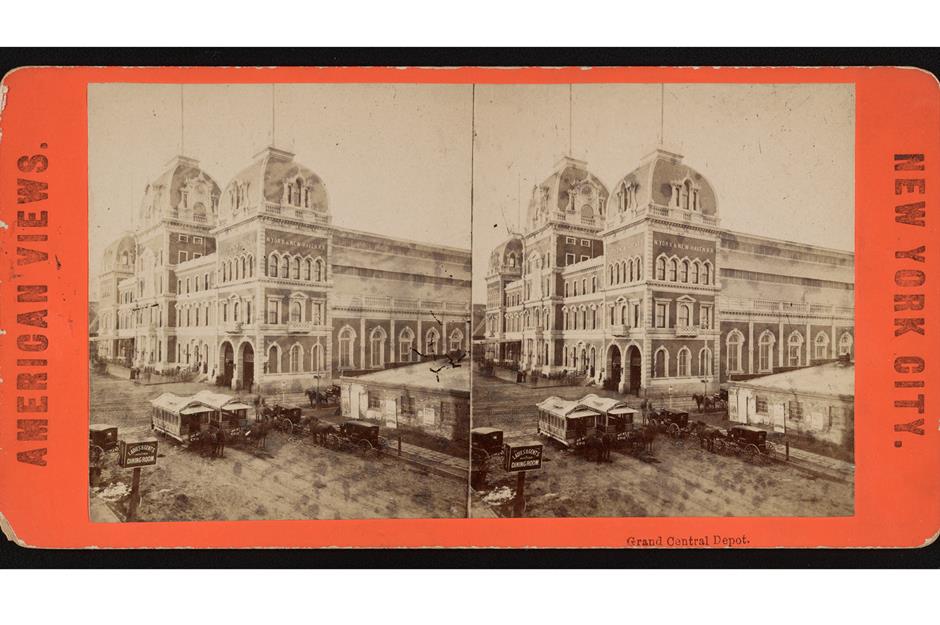
As rail lines developed in New York during the mid-19th century, businessman Cornelius Vanderbilt made a proposal to unite three different rail terminals in one place. In 1871 the Grand Central Depot opened and within 20 years, it had already met its full capacity. Following renovation and expansion work, the building took on its current name: Grand Central Terminal. However, in 1903 the railroad approved a plan to build an even bigger, multi-level station. The entire terminal was torn down and replaced by the building now recognized as Grand Central station. Construction started that year, and the new Grand Central opened in 1913. This 10-year undertaking cost roughly $2 billion in today’s dollars.
Grand Central Terminal
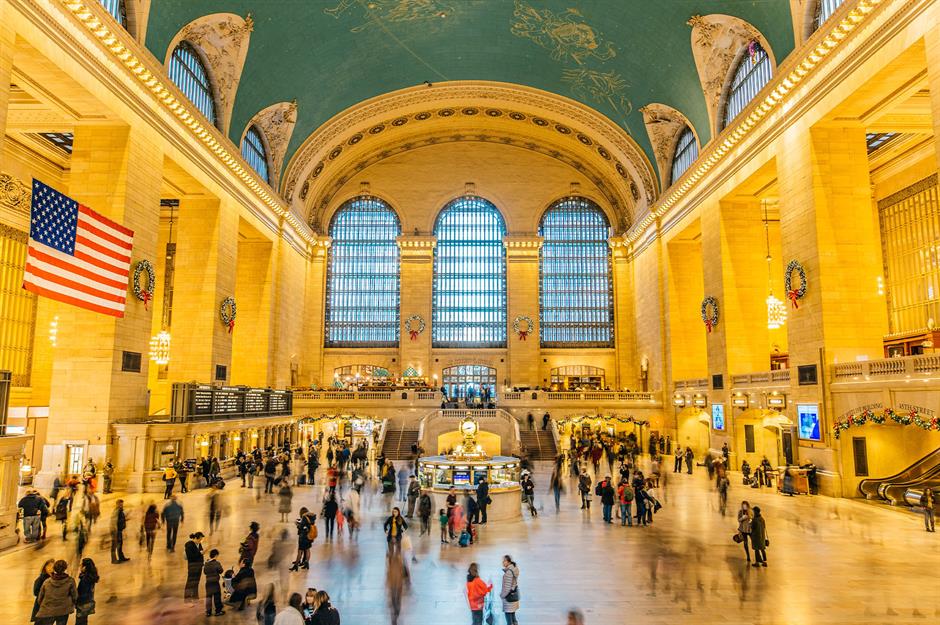
The station marked its 100th anniversary in 2013 and over the last century it's undergone several restorations for its ornate interiors and exteriors. Much more intensive construction has been underway below ground. In early 2023, the new Grand Central Madison terminal opened below the original station for the Long Island Rail Road, following the decades-long East Side Access rail project, which cost nearly $12 billion to build. This New York landmark has become a hub for commuter rail with connections to the subway as well as gaining a reputation as a retail and dining destination.
New York Subway
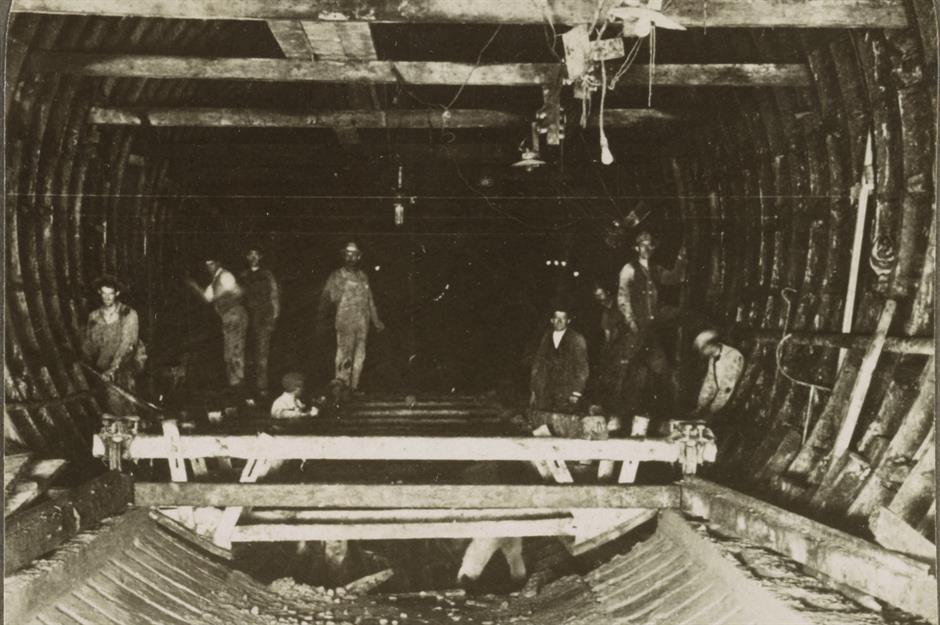
A massive blizzard in 1888 helped demonstrate the usefulness of an underground subway to ease congestion on New York’s crowded streets. The first line, which stretched for 9 miles and had 28 stations, was built in Manhattan and opened on October 27, 1904. As the city’s population grew in the early 20th century, so did the subway system, which now has 472 stations, most of which were built by 1940. The picture, from 1913, shows workers laying the concrete floor of a tunnel under the Hudson River.
Hundreds of millions of people use the New York City Subway, and on the average weekday there are more than 2 million riders. With 25 lines and running for 24 hours a day, it’s one of the biggest and busiest systems in the world.
New York Subway

Modern construction now uses tunnel boring machines, or TBMs, to create New York’s subway tunnels. Pictured is a TBM for phase 1 of the Second Avenue Subway on the east side of Manhattan, which opened at the beginning of 2017. The Second Avenue Subway line has been in planning and on-and-off construction for more than 100 years. Three remaining sections still need to be built for a full length of 8.5 miles with 16 stations.
The first subway line of 9 miles cost the city $35 million, the equivalent of over $1.2 billion today. The more recent Second Avenue Subway Phase 1 cost $4.5 billion for 2.4 miles and three stations.
Tamiami Trail
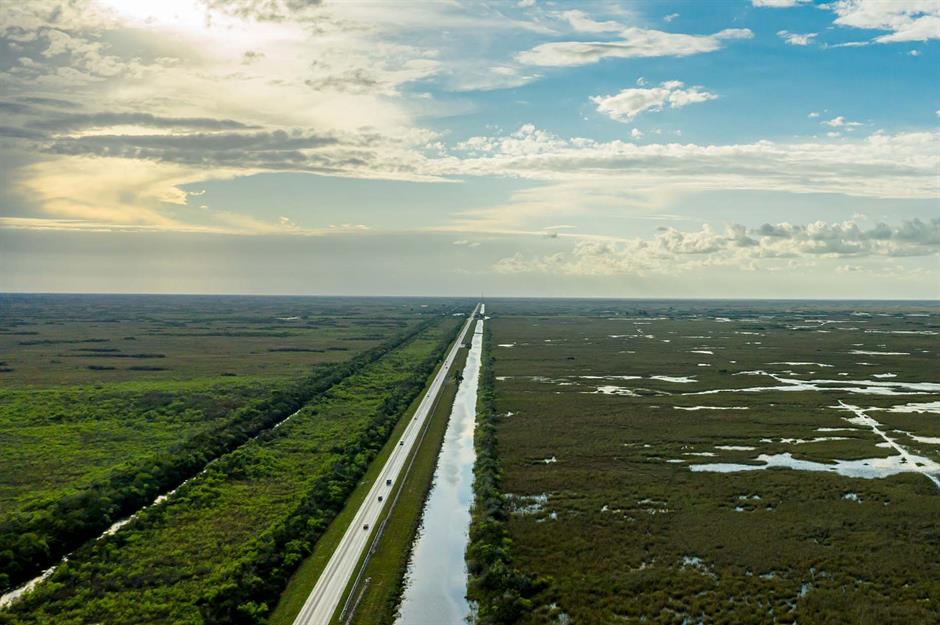
With the uptick of car ownership in the early 20th century, creating a highway connecting the cities of Tampa and Miami – hence the name Tamiami – would make travel around Florida a lot faster and easier. However, the same could not be said of building the 264-mile roadway. Starting in 1915, the project struggled to find funding and make any significant progress until 1923 and a cash injection from local businessman Barron Collier. With him on board, they could afford to pay more than 2,000 workers to help create the route, doing back-breaking labor to dig and blast out the limestone ground. The project was completed in 1928 at a cost of $8 million, around $140 million today.
Tamiami Trail

However, a 25-mile stretch of the road through the Everglades effectively created a dam blocking the natural flow of water, causing harm to plants and animals within the ecosystem. In the 1940s engineers added smaller bridges and other structures to help remedy the problem and prevent flooding, but the situation didn't improve. Finally, in 2013, federal funding was secured to build $97 million of new bridges. This program of work reached completion in 2019, and following its success improving water flow, the National Parks Service and Florida Department of Transportation are planning a second phase of bridge work.
Zion – Mount Carmel Highway
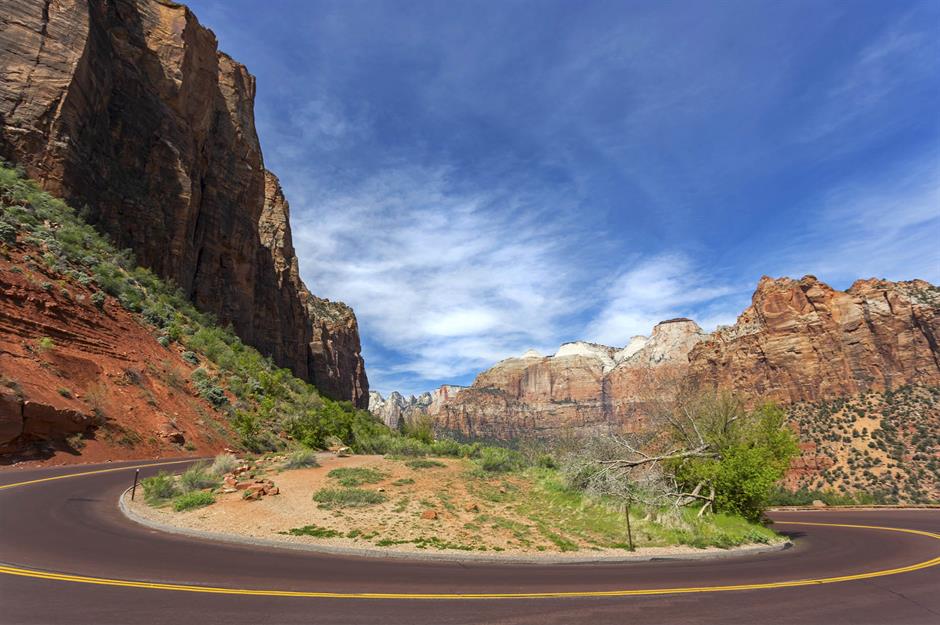
In 1916 Congress established the National Park Service (NPS) and one of its goals was to help visitors access its natural wonders. Promoting road construction played a big part in this. With tight switchbacks, carved through sandstone and rock cliffs, and passing through a mile-long mountain tunnel, Utah’s Route 9 is no ordinary highway.
Zion – Mount Carmel Highway

The 25-mile road may look effortless, but it was actually a highly-engineered and sophisticated project including mining a mile-long tunnel. Four crews started working on opposite ends of the highway in 1927 and it officially opened in 1930, reducing the journey from Zion National Park to Bryce Canyon National Park by a whopping 70 miles. At the time of completion, the Zion tunnel was the longest non-urban tunnel in the US and has been awarded several engineering accolades. The $1.9 million price tag is the equivalent of around $29 million today, and very little on the route has changed, although the softness of the tunnel’s sandstone has required extra reinforcement.
Hoover Dam
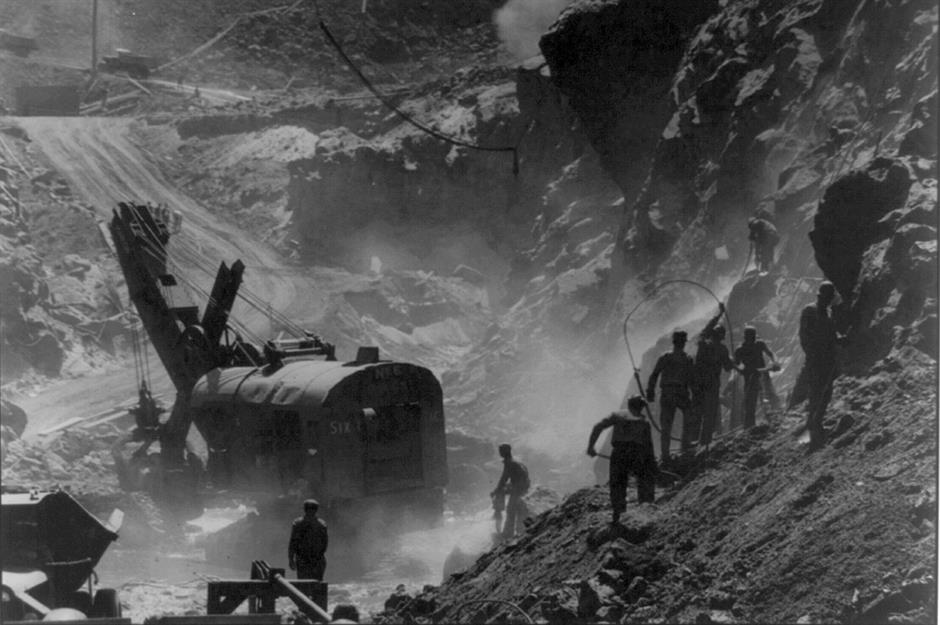
When the Colorado River caused devastating flooding in the early 20th century, several local agencies began seriously considering dam construction in the lower river valley. Not only would this mitigate flooding, but also create the nation’s largest reservoir. The possibility of generating electricity provided additional benefits, including paying for the massive infrastructure project. Construction started in 1930 to convert the rugged and inaccessible desert canyon into a powerful dam. Living quarters, roads and railroads all had to be built at the remote site, as well as a 222-mile long transmission line from San Bernardino, California, to supply electricity. At the time, the Hoover Dam was the largest ever constructed and employed an average of 3,500 people, 5,000 at peak construction.
Hoover Dam
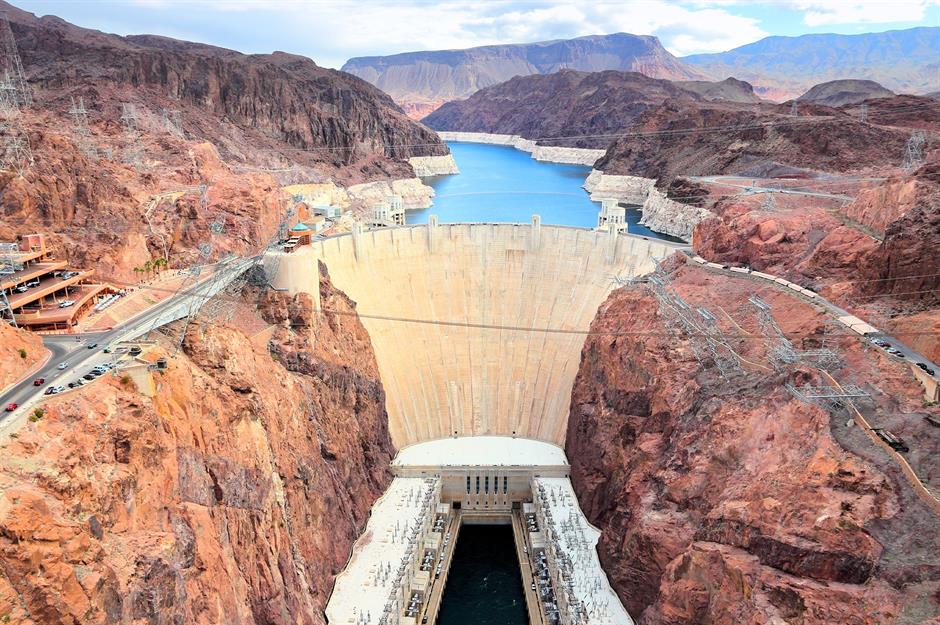
By the time it was completed in 1935, the Hoover Dam had racked up construction costs of nearly $49 million, more than $1 billion today. It was the most expensive construction contract ever let by the federal government and until 1949, the Hoover power plant was the world's largest hydroelectric installation in the world. Each year it generates around four billion kilowatt-hours of electricity, enough to power the homes of 1.3 million people in Nevada, Arizona and California.
Golden Gate Bridge
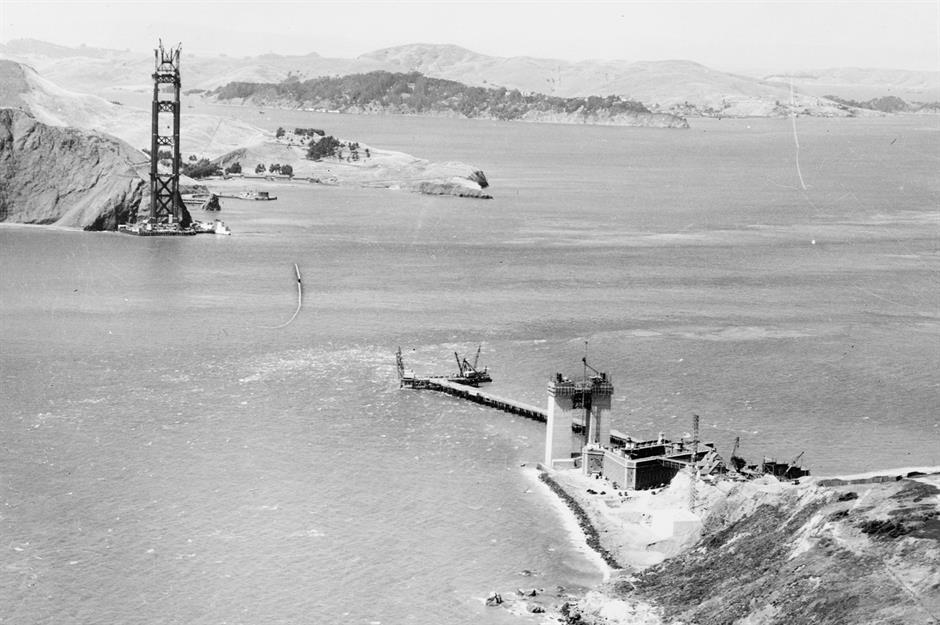
Plans for a bridge across the Golden Gate Strait started during the 1920s, with initial designs drawing public criticism for being unattractive. By 1929, motor vehicle travel via ferry exceeded available capacity, however both state and federal funds were non-existent. Voters passed a bond measure in November 1930, to provide $35 million for the bridge and work started in January 1933. Steel plants in New Jersey and Maryland manufactured the fabricated steel for the bridge, coating it in a red lead primer, which would inspire consulting architect Irving F. Morrow to develop the bridge’s distinctive “International Orange” color.
Golden Gate Bridge
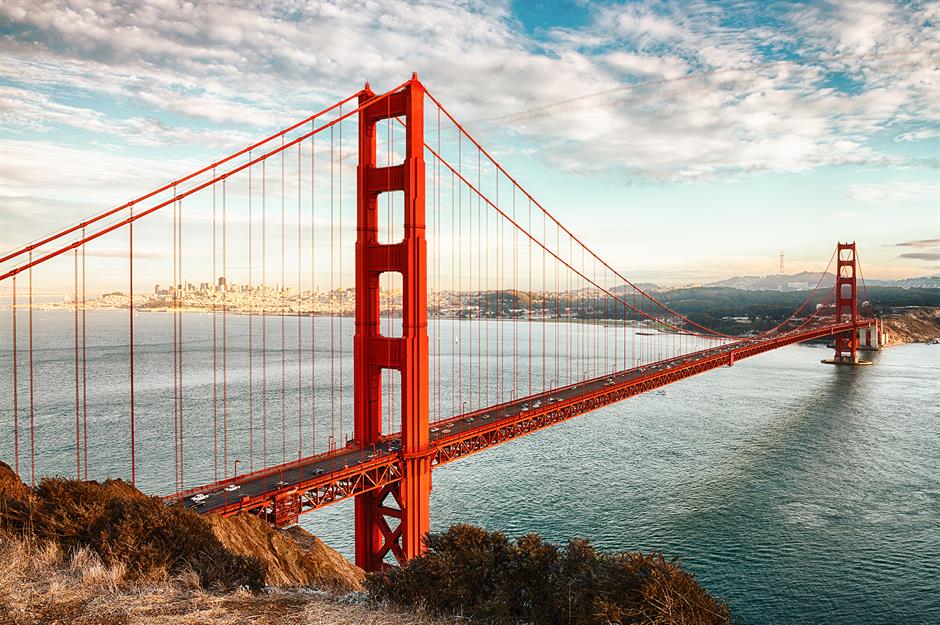
With so many people unemployed during the Great Depression, construction workers grateful for a job faced dangerous conditions to construct the iconic bridge. It is unknown exactly how many people the project employed, but 11 men tragically died during construction before its grand opening in 1937.
The 4,200ft-long suspension span of the Golden Gate Bridge was the longest in the world until 1964. Hundreds of thousands of drivers use it every day and more than 2 billion vehicles have crossed the bridge since it opened. It's thought to have cost around $37 million to build in 1937, the equivalent of around $775 million in today's dollars.
Now read about the world's most expensive buildings
Lake Pontchartrain Causeway
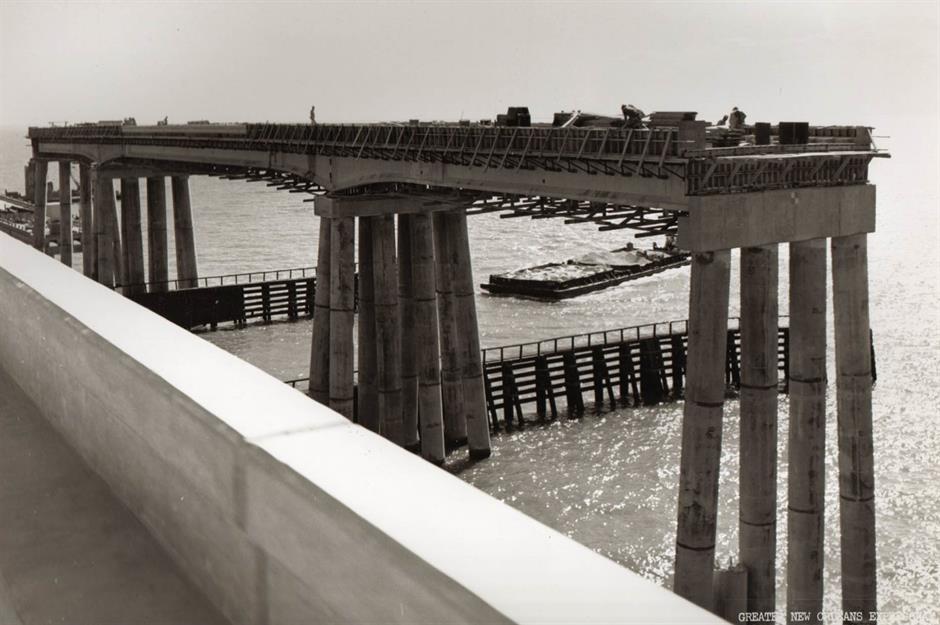
The idea for a bridge across Lake Pontchartrain had been discussed as early as the 19th century. This estuary makes up the entire northern border of New Orleans and traveling around the lake had always been very time-consuming. As the city’s population grew in the 1940s, a bridge crossing became a necessity that could no longer be overlooked. The Greater New Orleans Expressway Commission was formed and construction of the causeway started in 1955.
Lake Pontchartrain Causeway
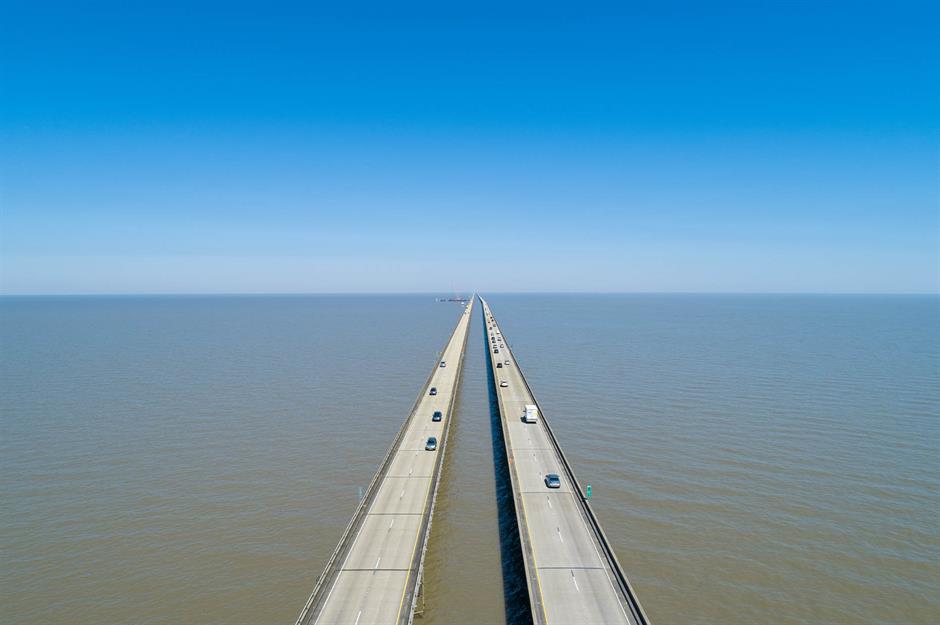
According to the contract, the 24-mile long bridge was supposed to be built in just 23 months. To meet this challenging deadline, engineers designed a simple component that could be mass-produced to build the bridge. The parts were produced at a concrete casting plant, which they built at the northern end of the lake, and carried to the construction site by barge. This drastically reduced both the cost and time of the construction, which was finished in just 14 months after the first piles were driven.
The southbound bridge opened in 1956 with a price tag of $46 million, while the northbound – which was built 80ft away – opened in 1969 and cost $30 million. In total, that's the equivalent of $790 million in today's dollars. The Lake Pontchartrain Causeway is the longest bridge over continuous water in the world and around 12 million vehicles cross it annually.
The Interstate Highway System
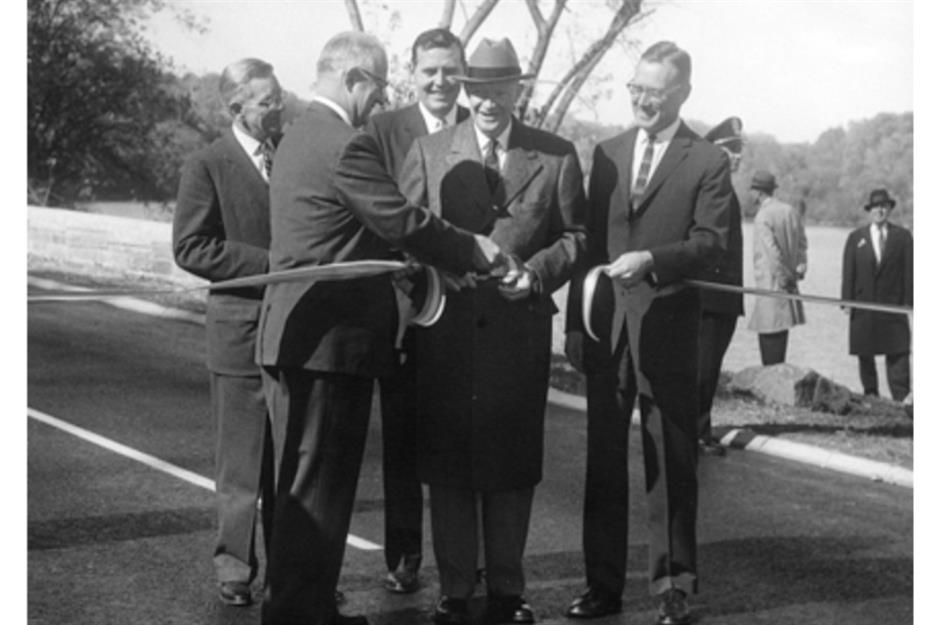
During World War II, then-general Eisenhower was impressed by how easy it was to drive on Germany’s autobahns. This inspired him as president to create safer and faster US highways with multiple lanes. In June 1956, he signed the Federal-Aid Highway Act, which would create 40,000 miles of interstate highways to accommodate the growing number of American cars taking to the roads.
Construction reportedly moved at a record pace, which came at a hefty price. To cover the costs, Eisenhower signed legislation to increase the gas tax temporarily to $0.04 per gallon. President Kennedy later approved the Federal-Aid Highway Act of 1961 that made the gas tax permanent.
The Interstate Highway System

As the price of the highway system grew by billions and billions of dollars, accusations of corruption ran rampant. Other controversies included estimates that up to 15,000 families and 1,500 businesses were being displaced every year as the project raced towards its completion.
By the end of 1962, 14,300 miles of the interstate system had been opened, and a year later that jumped to 16,600 miles. Today more than 46,000 miles are in operation. The price of construction was pegged at $129 billion, as estimated in 1991, which is the equivalent of around $285 billion in today's money. The longest interstate is I-90, which connects Boston to Seattle over more than 3,000 miles.
Read about other country-changing megaprojects from across the world
BART System
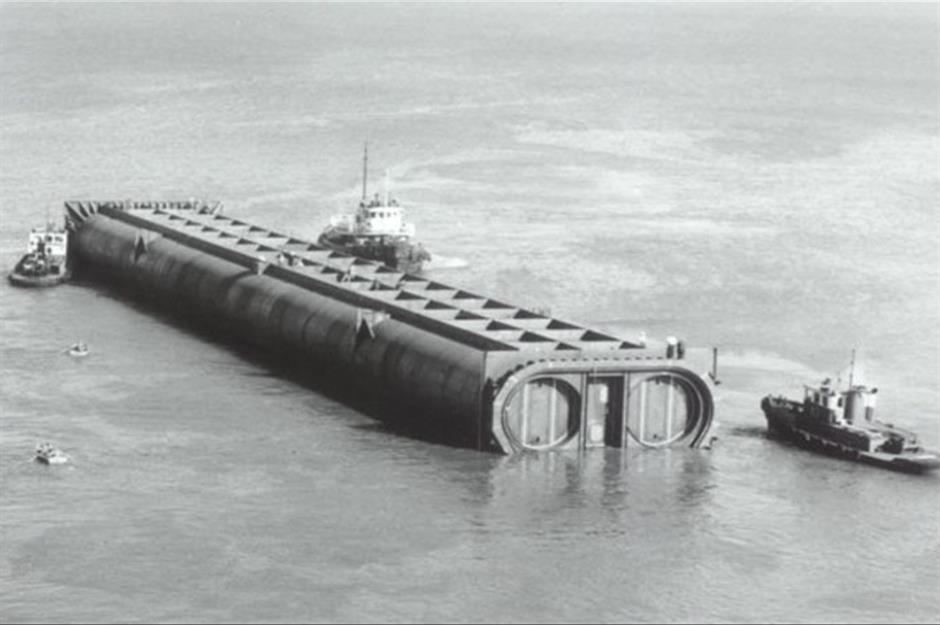
Seeing the region's population grow after WW2, Bay area leaders worried about car congestion on local bridges. The solution suggested in 1946 was an underwater tunnel between San Francisco Oakland for electric trains. However, planners argued the need to develop an entire system. After years of discussions, voters approved a $792 million bond to finance a futuristic 71.5-mile, high-speed transit system with 33 stations across three counties. The proposal also included rebuilding 3.5 miles of the San Francisco Municipal Railway and four new stations, plus, the Transbay Tube, estimated at $133 million. The total cost of this ambitious system, as of 1962, was projected at $996 million, an eye-watering $10 trillion today.
Construction started in 1964, with work kicking off in 1966 to build the Transbay Tube, a section of which is pictured here. A remarkable feat of engineering for the era, the project celebrated the tunnel's completion in 1969.
BART System
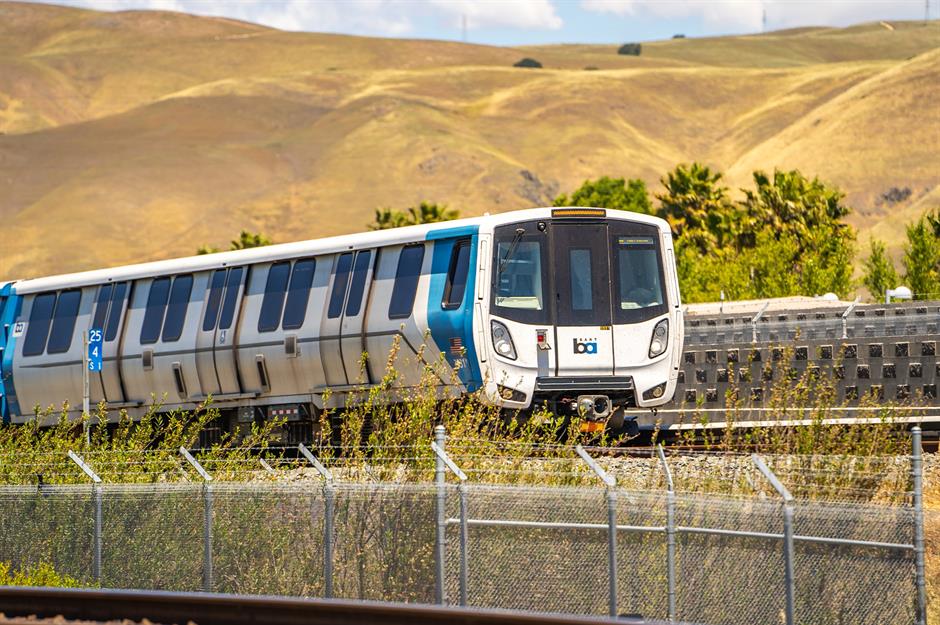
Meanwhile, the project's extensive remit and complex engineering, along with local opposition, had caused delays and budget overruns, and rising inflation throughout the 1960s made the situation even worse. There was not nearly enough money to deliver the original vision for the network, and the state government enacted a sales tax to help cover the costs. An initial 28-mile segment of the Bay Area Rapid Transit (BART) network officially opened in 1972, and shortly after, federal funding became available to help finish the project. Authorities point out this influx of money enabled BART to improve on its original design and plans, and wasn't entirely needed to finish the initial scope of work.
Central Artery Tunnel
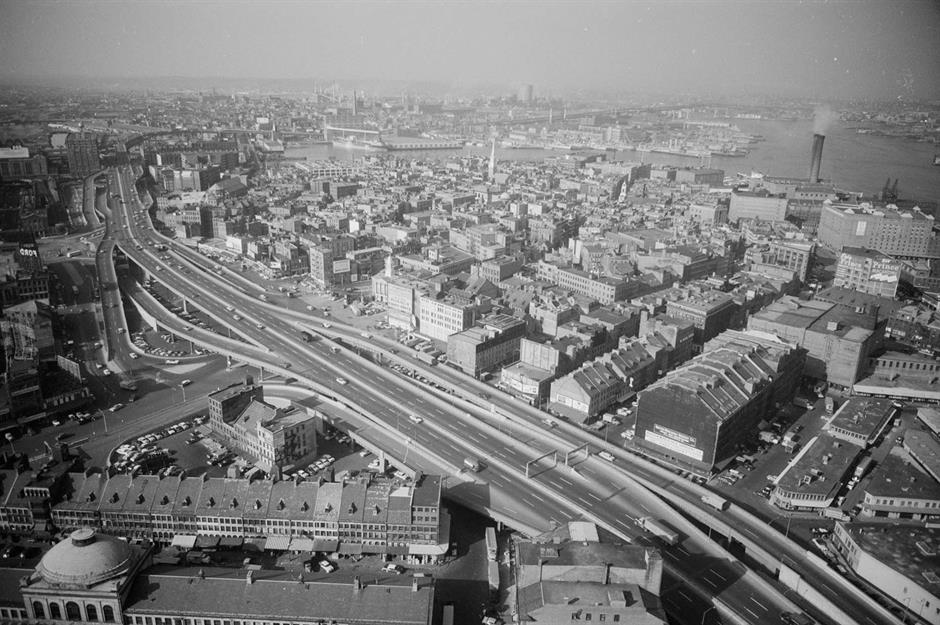
Boston's Central Artery elevated highway opened in 1959, and quickly became one of the most congested highways in the US, causing major impacts to the local economy and environment. Planning started in 1982, and much like San Francisco's BART, the solution combined several ambitious engineering works into one megaproject. What would become known as the "Big Dig" was scheduled for completion in 1998 at a cost of $2.8 billion.
The project covered nearly 8 miles of highway, many of which would be in new tunnels. The six-lane Central Artery would be replaced with an underground expressway, which would finish in a 14-lane bridge over the Charles River. Plus, there'd be an extension of Interstate-90, new freeway interchanges and all of this work needed to be done without any major interruption to the city. Construction started in 1991 with more than $1 billion in contracts underway within the first year of work.
Central Artery Tunnel

However, numerous issues meant the budget and schedule would be exceeded, from improper cost estimates to unexpected ground conditions. At the peak of construction, activity about 5,000 construction workers were on the job doing around $3 million of work each day. The project eventually reached completion in 2007 with the crumbling elevated freeway removed and open green space in its place. The final cost had skyrocketed to nearly $15 billion ($21 billion today). Despite this, the Big Dig has been lauded for breaking many engineering records and the city's air quality has improved.
San Francisco-Oakland Bay Bridge Eastern Span
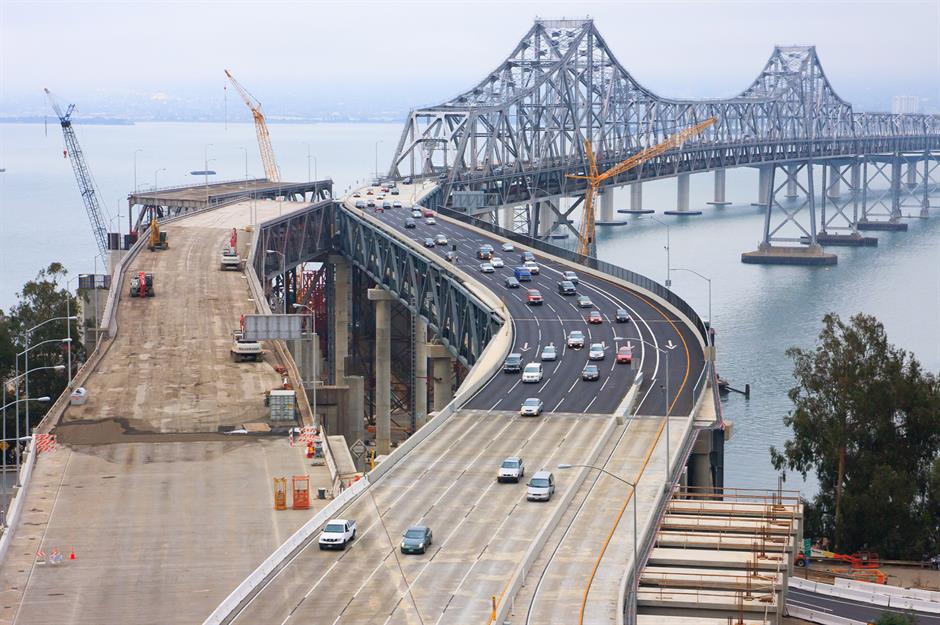
The Bay Bridge, built in 1933, is actually two bridges that are connected at Yerba Buena Island. The west connects to San Francisco and the east connects to Oakland. The eastern span was damaged during the 1989 Loma Prieta earthquake when a section of the upper deck collapsed onto the lower deck, showing the potential fragility of the megaproject. Tragically, the incident led to the death of one person. Extensive rehabilitation on the western section has improved its ability to withstand a seismic event, but the work proved too expensive for the eastern section...
San Francisco-Oakland Bay Bridge Eastern Span

Officials agreed it would be cheaper to build a replacement bridge, with a cost estimate in 1997 of around $1.3 billion and construction finishing by 2004. History repeats itself, and just like the Golden Gate Bridge, Bay area politicians and residents opposed the proposed no-frills new bridge design. Back to the drawing board, it was agreed that a more exciting design would depend on new tolls and additional funding sources. This led to various stakeholders arguing over the bridge's location and other details. By the time a final design had been chosen in 1998 the price had doubled.
Construction started in 2006 and the new bridge officially opened in September 2013, at a cost of $6.4 billion. The demolition work for the old eastern span cost another $239 million and took three years to complete.
Alaskan Way Viaduct replacement Tunnel (SR 99 Tunnel)
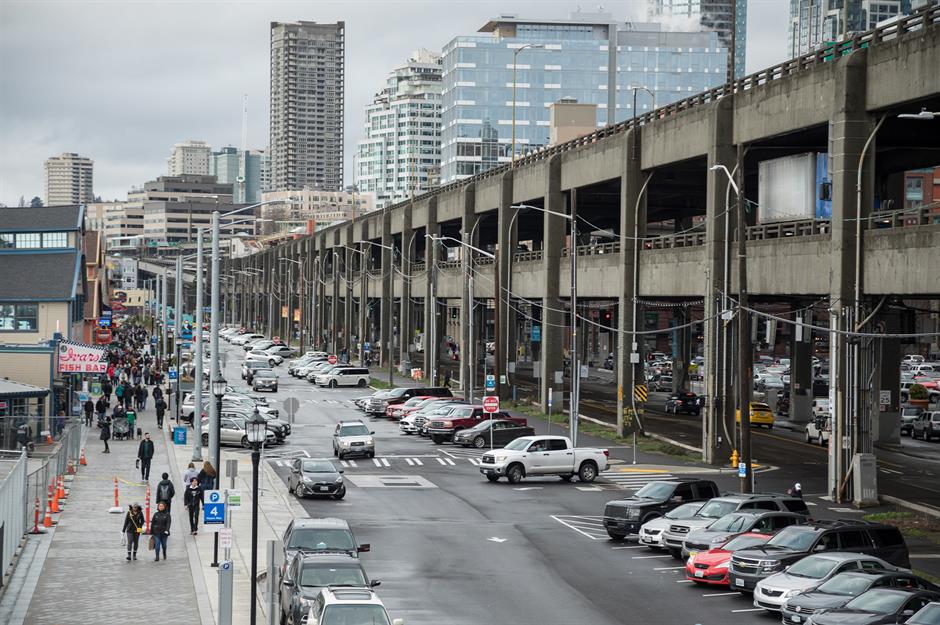
The Alaskan Way Viaduct, an elevated freeway along Seattle's waterfront, experienced only minor damage during the 2001 Nisquilly earthquake, but inspectors discovered it could easily collapse in the future. Replacing the viaduct wasn’t a new idea as it had been criticized for blocking off downtown Seattle from the waterfront from as early as the 1960s. However, the decision to build a tunnel was incredibly contentious, and followed years of fighting among state and local stakeholders.
Contractors broke ground in 2010 for the 52ft diameter tunnel, two miles long, which could accommodate a double-decker highway carrying two lanes of traffic in each direction. The TBM for this project was the largest ever diameter in the world at the time of construction, and certainly remains the largest diameter in North America.
Alaskan Way Viaduct replacement Tunnel (SR 99 Tunnel)

Unfortunately, the machine got stuck early in the mining phase after encountering an 8in steel pipe from a former well. The mishap caused a years-long delay to the project to excavate a deep shaft to remove the machine and make repairs. The tunnel finally opened to the public in early 2019, at a cost of $3.29 billion, more than $1 billion over budget. The contractor and the state of Washington also spent several years embroiled in a lawsuit concerning hundreds of millions of dollars to compensate for delays on the project and repairs to the TBM.
Now read about the most expensive megaprojects ever
Comments
Be the first to comment
Do you want to comment on this article? You need to be signed in for this feature